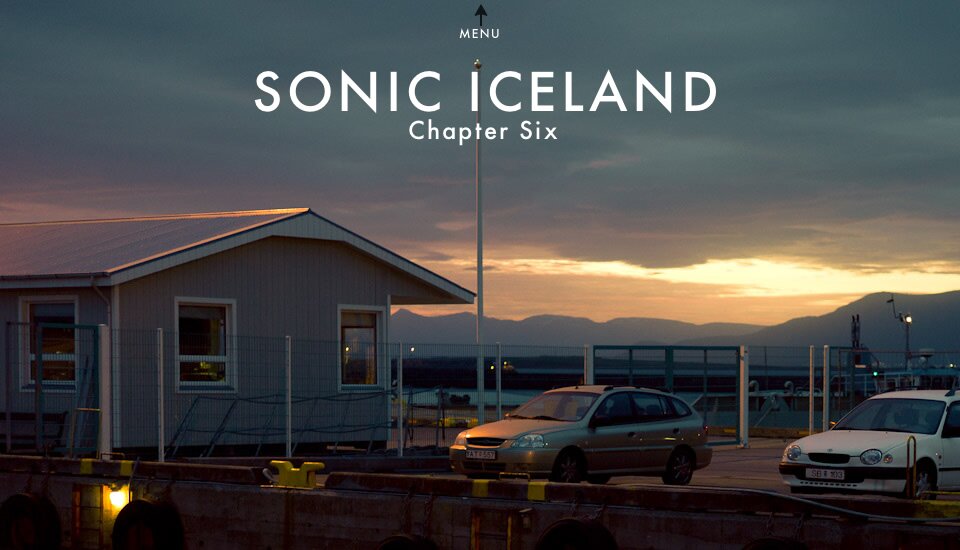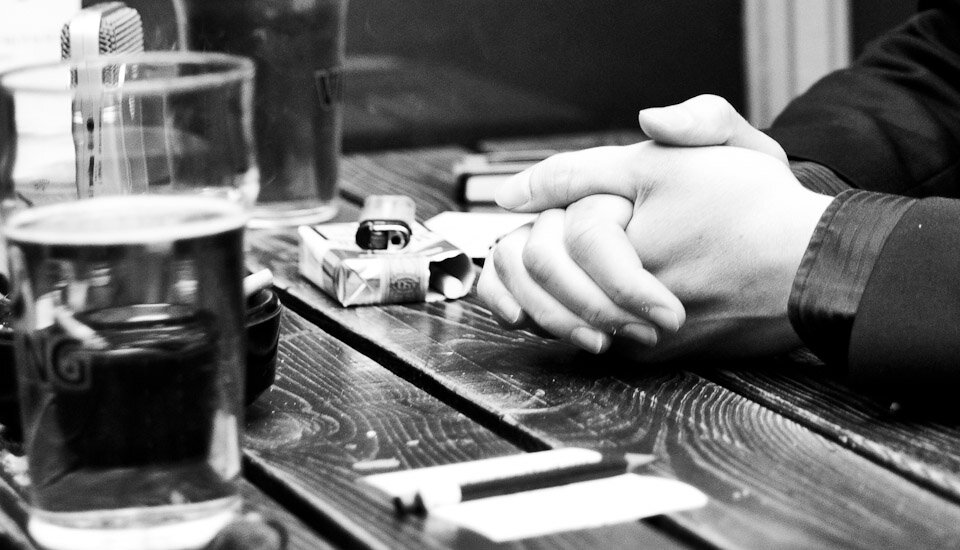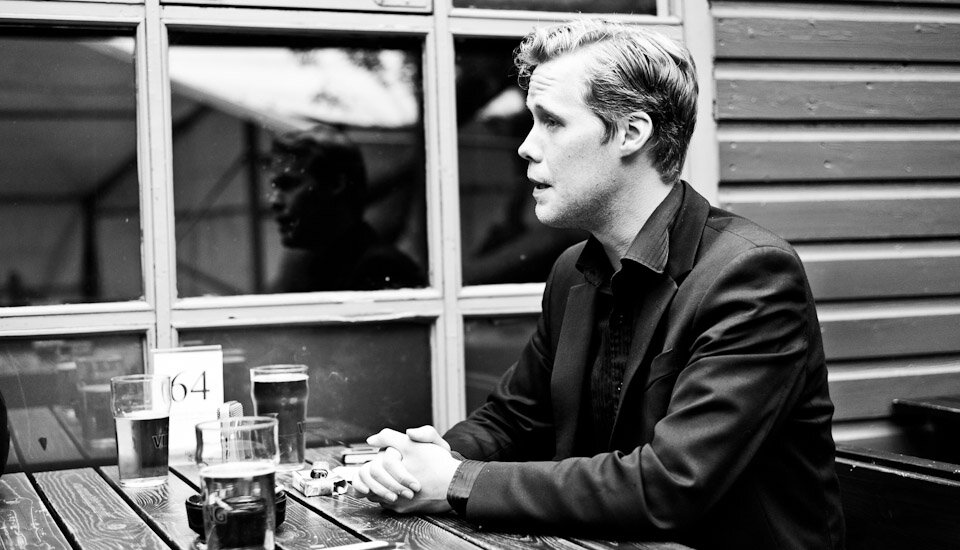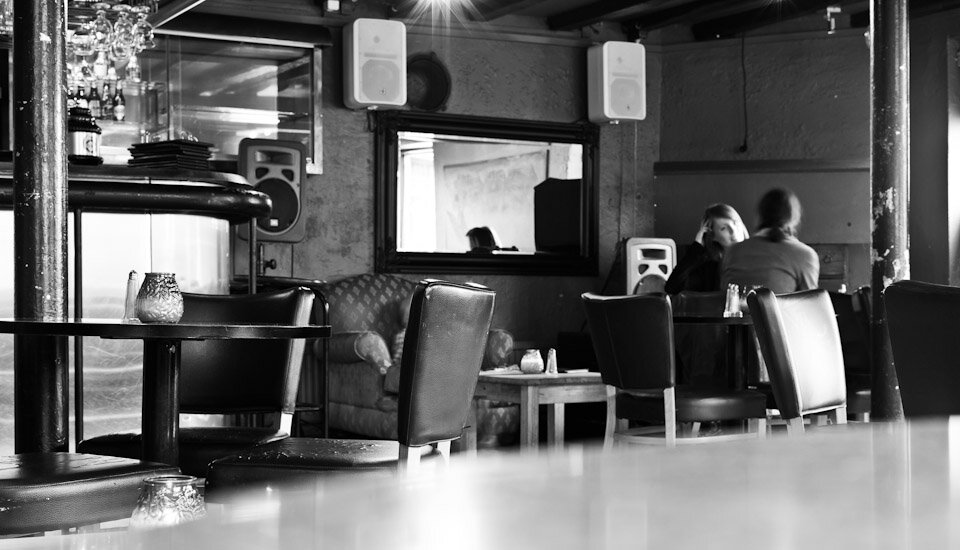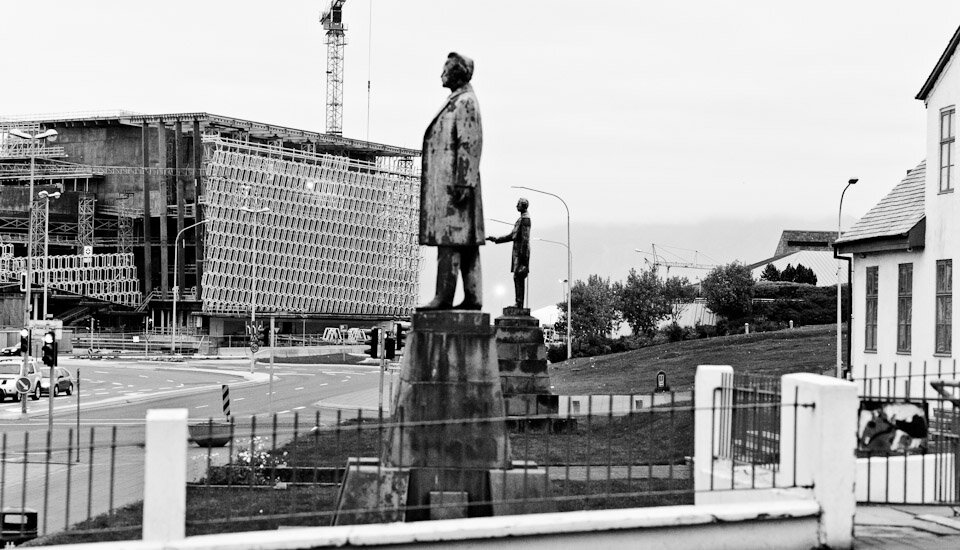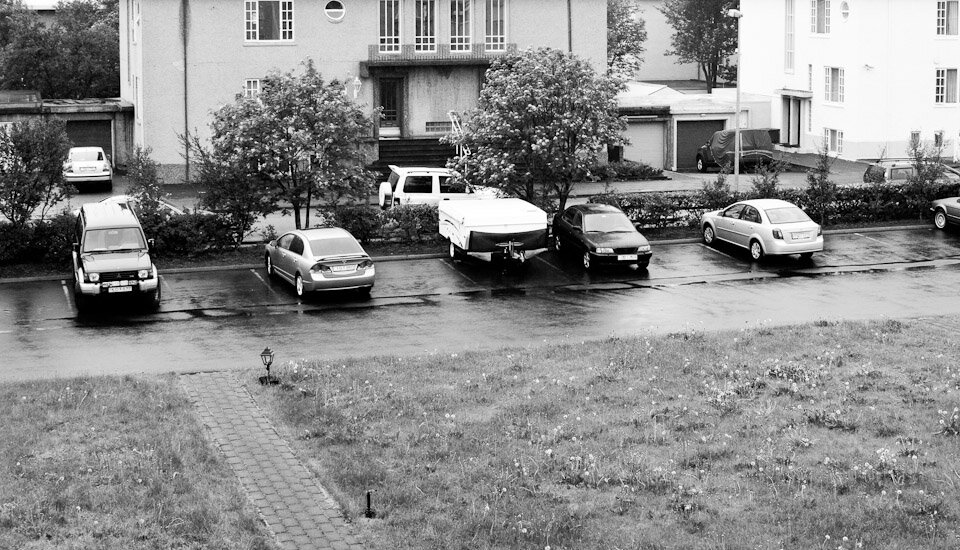What is said – Chapter Six
Iceland reminds me of Ireland. An island nation, where much of the cultural activity is centred on the capital, and both countries are famous for their landscapes. And for the rain. On the eigth day of our trip, the weather in Reykjavík finally felt like home, i. e. rain from all sides.
By then, we had established some kind of working schedule: check mails, search Myspace and Facebook for new Icelandic artists, phone people who told us to call them, get frustrated when another interview is postponed, go out and buy stuff. So after some administrative emailing, I went out to buy something to read.
Iceland has one of the oldest literary traditions in the world, because Icelandic as a language has not changed much over the centuries. Not only can Icelanders read texts written in the Middle Ages, they are also very proud of their Sagas, story collections that form the basis of most things we know about Vikings and the pantheon of Nordic gods and mythology, and are also acute retellings of happenings in Iceland shortly after the time of the settlement, about 900 – 1000 AD. I had managed to read Njals Saga before coming to Iceland, and really liked the story about gory blood feuds in Viking Iceland a lot. Icelanders seem to be natural storytellers – that’s one thing we got from the first couple of interviews already. Iceland also has one Noble Prize laureate, Halldór Laxness. But I wanted to see for myself what Icelandic bookstores have on offer, so I braved the rain to get myself some Icelandic writings from the biggest bookstore in town, Eymundsen. The bookstore sits in the middle of Skólavörðustígur, the steep street leading up to the Hallgrímskirkja (Iceland‘s largest church) in downtown Reykjavik. I walked by the graveyard around the corner of our apartment, passed Austurvöllur Square and reached the store without getting too wet. It doesn’t look like much from the outside, more like a department store from the 70s than a friendly place that sells books, but they have a small cafe, and it smells like freshly roasted coffee inside, which combined with the smell of newly printed books, is one of the best smells in the world. Their array of German and English books is quite diverse, and besides the standard Laxness- and Saga-collections there are also a couple of independent publications, so I ended up with “Angels of the Universe” by Einar Már Guðmundsson and a small booklet about sex with elves, self-published by a young lady from Reykjavik. Yes, I wrote “sex with elves”.
Speaking of Icelandic writing: as we not only aim to get a feel for the music scene here in Iceland, but also want to know why Icelandic art in general is highly regarded world-wide, especially the written word. I had reached out to some independent writers and poets that I had tracked via the web, and local poet, critic and Tom Waits-lookalike Arngrímur Vídalín had agreed to meet us that evening, at Hressingarskálinn (or short Hresso), a café-bar downtown. The place used to be a hangout for the so-called Icelandic Atom Poets of the 1940ies and -50ies, had been converted to a McDonalds in the mid-nineties, and has now been restored to its former and proper use, complete with American-diner like red cushion benches and ketchup bottles. After settling in the beer garden, with the rain lashing down on the canopy above our heads, we harassed Arngrímur about Icelandic poetry, literature and sagas over, fittingly, a couple of Viking beers.
Read our interview with Arngrímur Vídalín
After the interview, walking the short distance from Hresso towards a venue called “Venue”, where we planned to attend a show that evening, I thought that for the first time since my arrival I felt like getting a feel for the place – and that was not because Reykjavik is such a beautiful and impressive city, it is because of the people. The thing that makes my current home Dublin liveable are my friends and the Irish people in general, their ever-readiness for a quick chat and over-elaborate friendliness. And for Reykjavik, the people are not as openly friendly, but once they see that you are not an asshole or in town because of the hipness of the place, they welcome you like a friend that was absent for a long time. Ok, more like a pleasant acquaintance that was absent for a while.
Still, weekday-Reykjavik never ceased to amaze me when it comes to doing something – doing something at all. As we reached the Venue-club around 10 PM, the prospect of being the two only guests that evening did not seem very appealing. Therefore we went over to Boston, a bar/nightclub on Laugavegur for more beers, where we ended the evening discussing the gruesome murder methods listed in the Sagas (one hero throwing the jawbone of a slaughtered victim into the head of another) and the beauty of Icelandic women, once more.
Iceland’s literary traditions go back to the 13th century , and the country itself has one of the highest literacy rates in the world. No wonder those people are crazy about books.
Travel: Literary Iceland
You’ll find the biggest branch of Iceland oldest bookseller (since 1872), Eymundsson, up on Skólavörðustígur in a non-descript rectangular building from the 80s, and they also have outlets throughout Iceland.
If second hand books are more your thing, there’s a dungeon-like shop on the corner of Klapparstígur (right next to Cafe Rosenberg), filled with old tomes, bleached-out newspapers and elderly Icelanders grumpily ignoring tourists. It allegedly was the favourite haunt of Bobby Fischer during his Icelandic exile.
Reykjavik also has its own Literary Festival, which takes place in September every year. The city has also become the latest addition to the UNESCO list of Cities of Literature in July 2011.
Want to know more about Icelandic writers and poets? Visit fict.is



